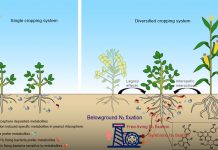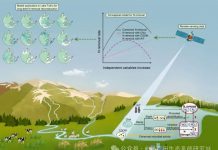Li ZQ, Li DD, Ma L, Yu YY, Zhao BZ, Zhang JB. Effects of straw management and nitrogen application rate on soil organic matter fractions and microbial properties in North China Plain. Journal of Soils and Sediments, doi: 10.1007/s11368-018-2102-4
Abstract
Purpose
A 2-year field experiment was conducted on the North China Plain to assess the effects of two straw management practices and different nitrogen fertilizer addition levels on soil organic matter (SOM) fractions and microbial properties under a winter wheat-summer maize cropping system.
Materials and methods
Eight treatments (two straw management practices and four nitrogen fertilizer input levels) were established using a randomized complete block design. The straw management practices were no straw return and straw return. Each straw management practice received nitrogen fertilizer rates at 0 (N0), 270 (N270), 360 (N360), or 450 (N450) kg N ha−1 year−1. The soil properties measured included SOM fractionation, enzyme activities, community level physiology profile (CLPP), and microbial community abundance and composition, which were represented by phospholipid fatty acid (PLFA).
Results and discussion
Compared to no straw return, the addition of straw significantly increased soil total organic carbon and nitrogen, particulate organic carbon and nitrogen, and occluded particulate organic carbon and hot water extractable organic carbon by 7–29%. Invertase, protease, urease, and dehydrogenase activities increased by 22–40%. The biomasses of Gram-positive bacteria and fungi also increased. The increase in SOM fractions may be attributed to the decomposition of the added straw by more active enzymes, which may result from the shift of microbial community composition. In addition, hot-water extractable organic carbon, NO3-N, urease activity, and fungal biomass in the N270, N360, and N450 treatments significantly increased, independent of the nitrogen application rate, which indicated that N input level had a non-linear effect on soil properties in this area.
Conclusions
Short-term straw return combined with a modest nitrogen fertilizer input (270 kg N ha−1 year−1) can increase SOM contents and microbial activity, which may help improve soil fertility in this region.








